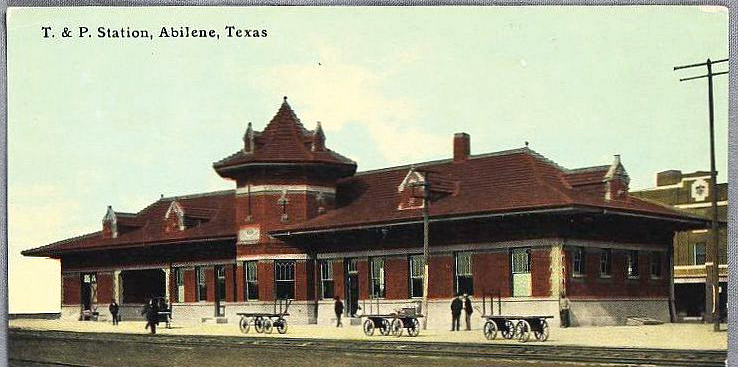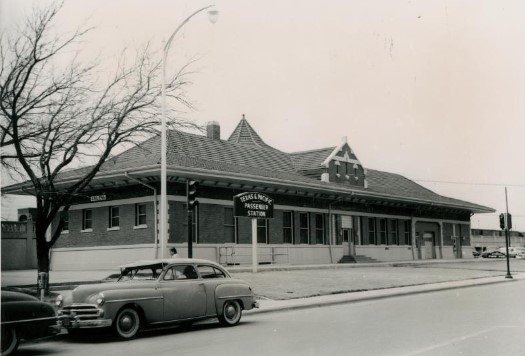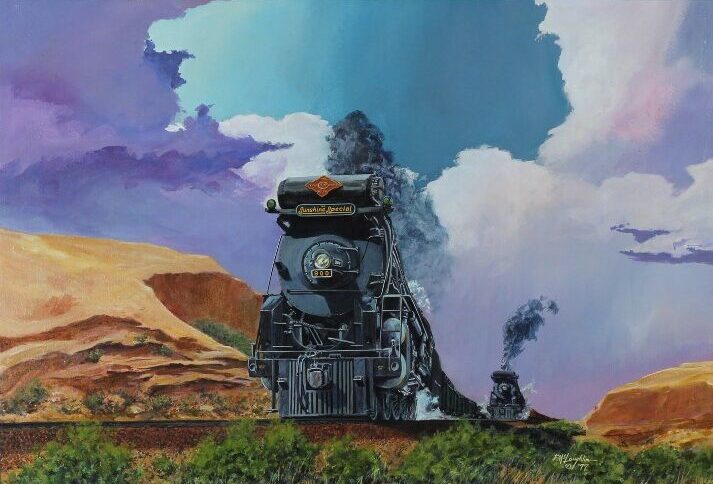Full Steam Ahead: The Texas & Pacific Railway
Exhibition Reception | Thursday, September 5, 2024 | 6-8 pm
Guest Speaker: Tony Privett, Slaton Harvey House
The Texas & Pacific Railway Company (T&P Railway) began plans to build a railroad line from Shreveport, Louisiana all the way to San Diego, California, creating a southern route that would help with winter climate complications. The T&P Railway began construction in 1872 and the first service between Longview and Dallas opened in July 1873. As construction moved west, talks of where to lay the rail line through Taylor County began, and by 1880, a group of land speculators converged to decide on the present location of Abilene. The first Abilene depot opened in 1881 and was just a railroad car at Pine Street and the current overpass. It was followed by a two-story building constructed in 1882 and another one-story building built in 1902.

Completed at the end of 1910, the existing one-story T&P Depot remained a very busy stop throughout the 1920s as Abilene continued to grow. During the Depression, the Works Progress Administration built an elevated track to allow for easier access to the South First area. In the 1940s, the depot was used as a service station for soldiers shipping off to war. However, with the rise and popularity of automobiles in various cities throughout the United States, this led to the decline of passenger trains and Abilene suffered the same fate as other regions. The last T&P Railway passenger train came through Abilene in March 1967. The T&P Railway merged with Missouri Pacific in 1976, which later merged with Union Pacific in 1980, and the passenger terminal closed in 1984.
This exhibition features the significant impact of the Texas & Pacific Railway in Abilene. Artifacts such as model trains, photographs, timetables, a recreated dining car, ticket booth, and agent desk will be on view to show visitors how the train-traveling experience might have been in the early 20th century.
 T&P Passenger Station in Abilene, Texas, photograph, circa 1940s, Collection of The Grace Museum, Texas & Pacific Railway Collection
T&P Passenger Station in Abilene, Texas, photograph, circa 1940s, Collection of The Grace Museum, Texas & Pacific Railway Collection Serving Bowl, T&P Dining Car, no date, Collection of The Grace Museum, Texas & Pacific Railway Collection
Serving Bowl, T&P Dining Car, no date, Collection of The Grace Museum, Texas & Pacific Railway Collection Ed McLaughlin, Untitled [Sunshine Special], 1977, oil on canvas, Collection of The Grace Museum, Texas & Pacific Railway Collection
Ed McLaughlin, Untitled [Sunshine Special], 1977, oil on canvas, Collection of The Grace Museum, Texas & Pacific Railway Collection
Read the exhibition article in Abilene Scene Magazine – July/August 2024
Exhibitions Sponsors



